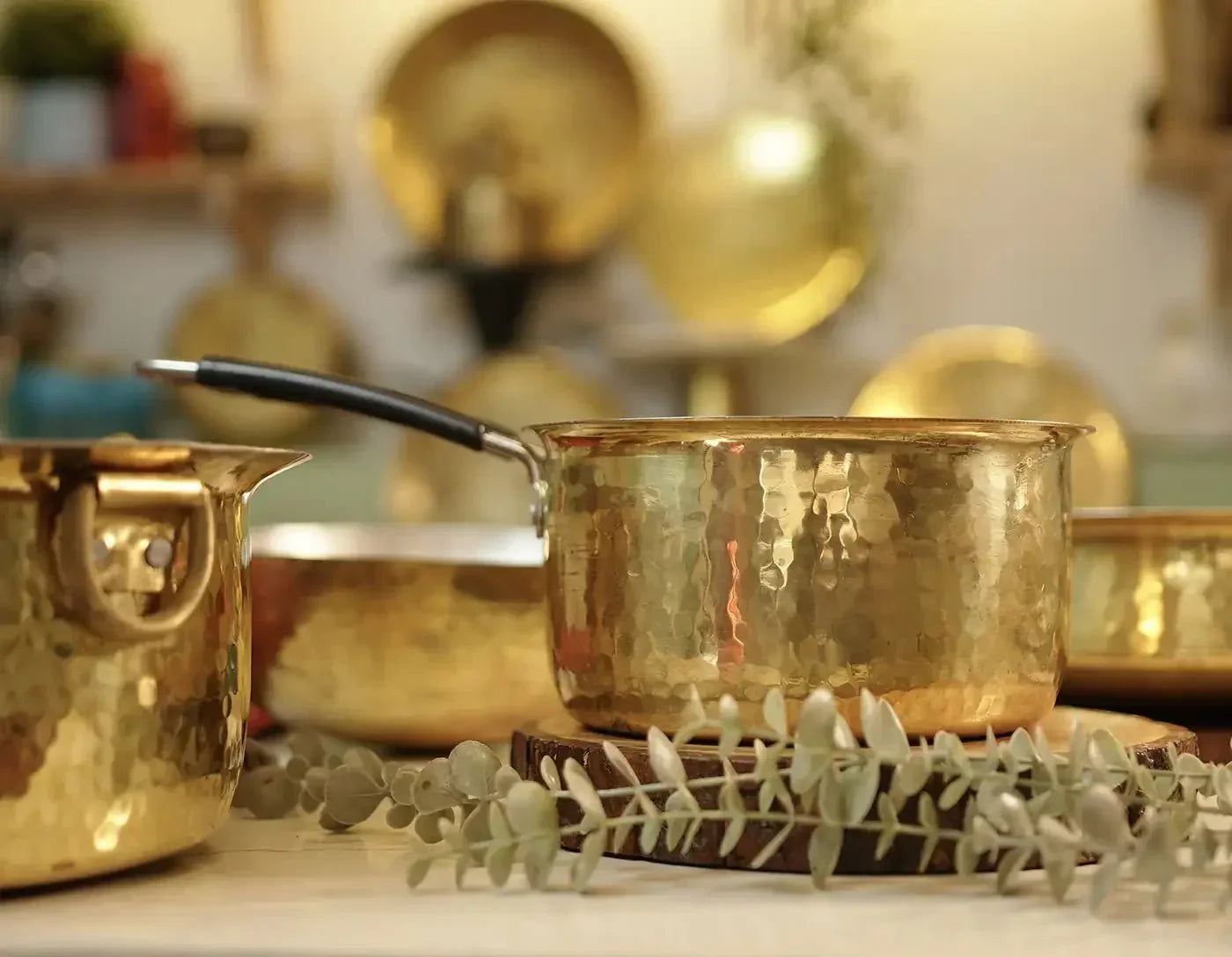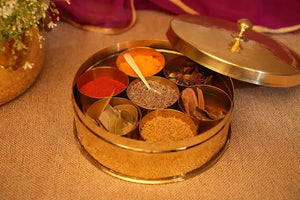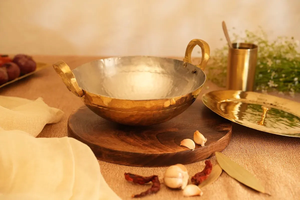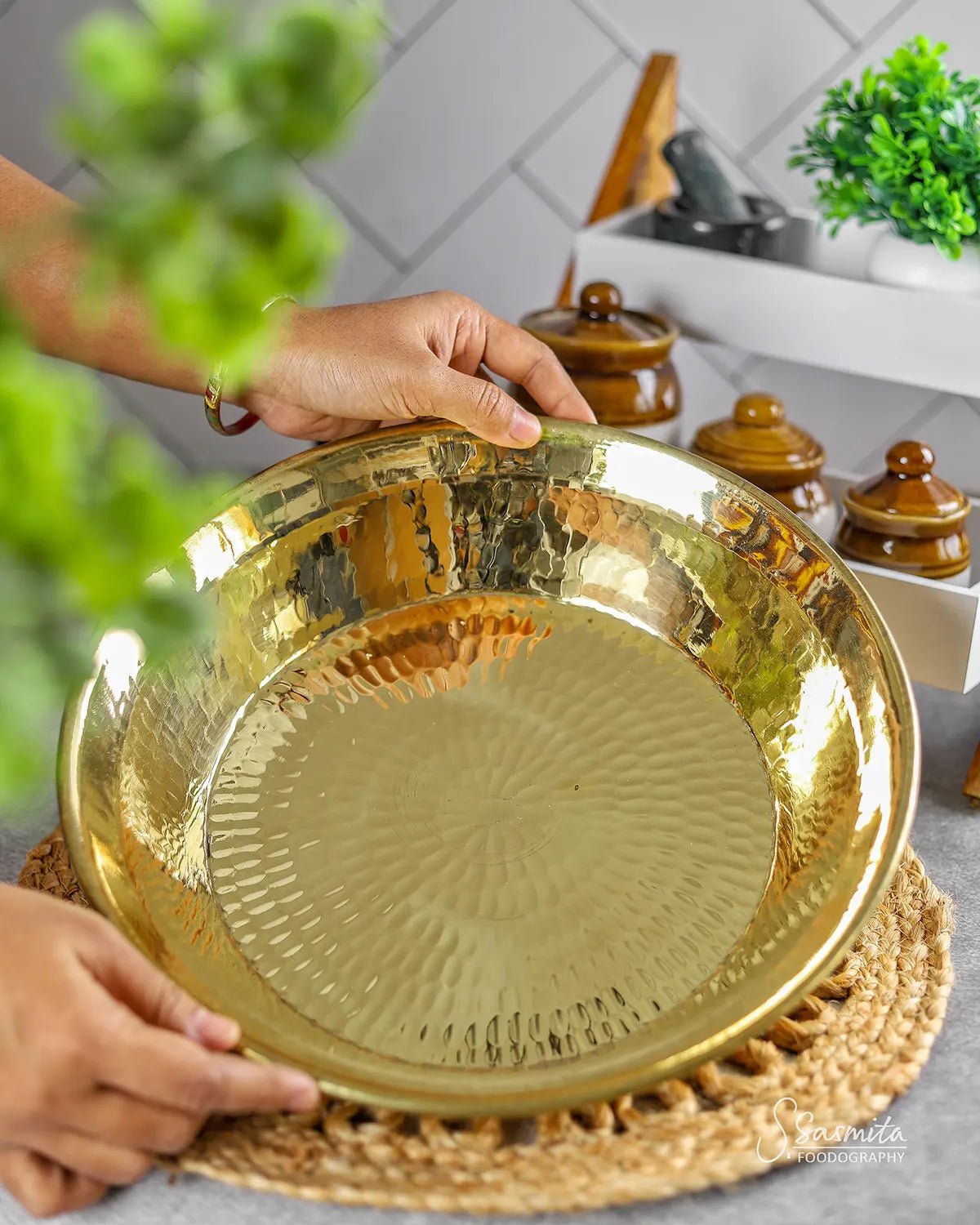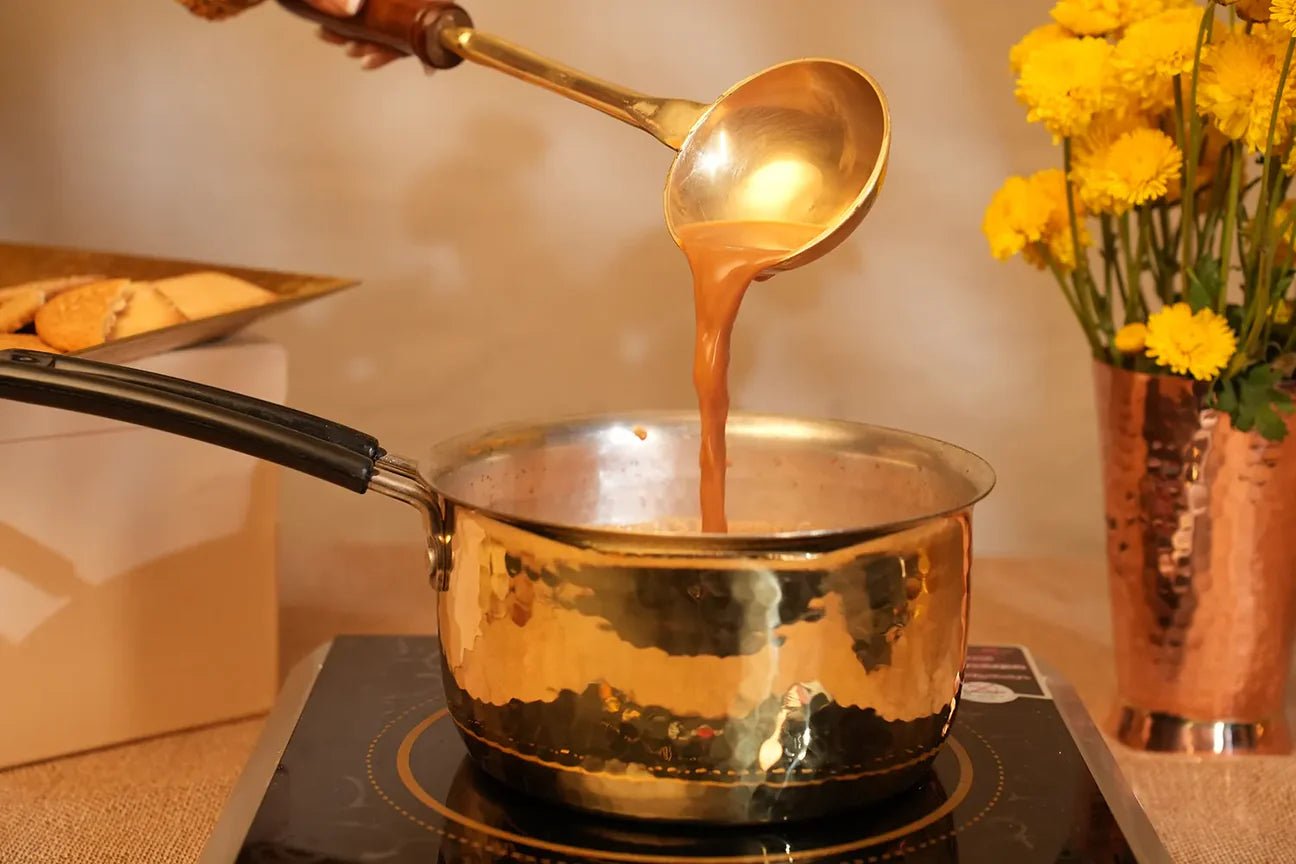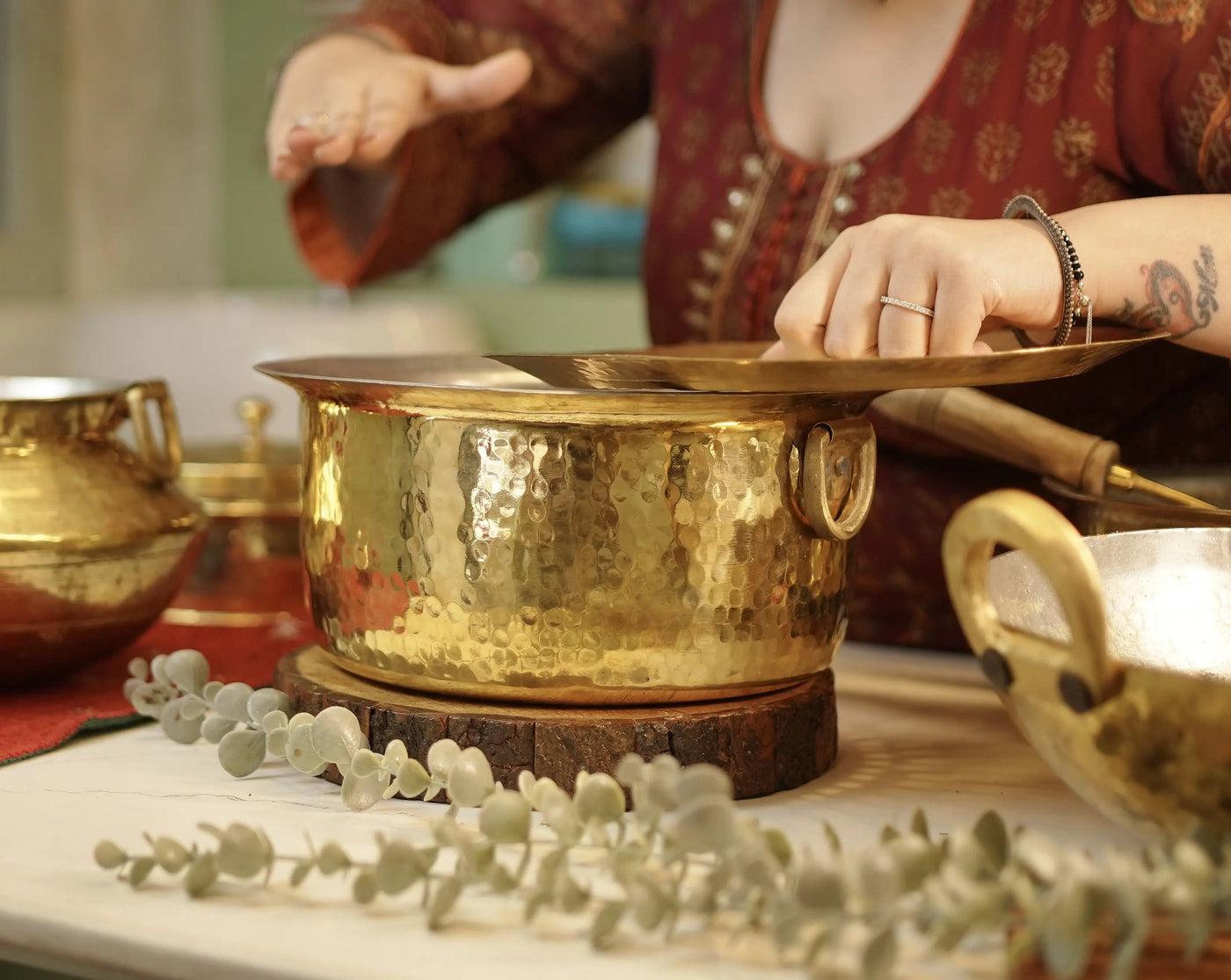Whether you’re setting up a new kitchen or upgrading your cookware, one question often comes up: “Do I really need a saucepan if I already have a pot or kadhai?” At first glance, these utensils might look similar, but they serve very different purposes. Understanding these differences can not only improve your cooking results but also help you use your kitchen space more efficiently.
Let’s break down what exactly a saucepan is, how it’s used, and how it compares to the pot and kadhai — three essentials in any Indian or global kitchen.
Suggested Products: Lagan Utensil | frying Pan | Dosa Tava | Brass Kadai.
What Is a Saucepan?
A saucepan is a deep, round-bottomed pan with high, straight sides and a long handle. It often comes with a lid and is designed primarily for tasks that involve boiling, simmering, or heating liquids. Think of it as your go-to utensil for making sauces (hence the name), heating milk, preparing soups, or boiling pasta.
Common Features of a Saucepan:
-
Tall, straight sides
-
One long handle (sometimes with a helper handle)
-
Comes with a tight-fitting lid
-
Available in various materials: stainless steel, non-stick, brass, copper, etc.
-
Typically smaller than stock pots but deeper than frying pans
Popular Uses:
-
Making sauces and gravies
-
Boiling water, milk, or tea
-
Cooking pasta, noodles, or rice
-
Reheating leftovers
-
Preparing custards or hot chocolate
The saucepan is ideal when you need even heating and heat retention for liquid-based dishes.
What Is a Pot?
The term "pot" generally refers to larger cooking vessels like stock pots or Dutch ovens. These have a wider base and taller sides compared to a saucepan and usually come with two small loop handles on either side instead of a long one.
Key Differences from a Saucepan:
-
Much larger capacity
-
Two handles instead of one
-
Primarily used for large batch cooking
Best Uses for a Pot:
-
Making soups and stews for the entire family
-
Cooking large quantities of rice or dal
-
Boiling whole vegetables or pasta in bulk
-
Preparing stock or broth
A pot is great for cooking in quantity, but may not be the most efficient choice for quick tasks like boiling milk or making one cup of chai.
Also Read: What Are the Benefits of Using a Brass Chapati Box?
What Is a Kadhai?
A kadhai (or kadai) is a deep, circular, and wide cooking vessel that is a staple in every Indian kitchen. It resembles a wok but with steeper sides and usually two handles.
Unique Features:
-
Wide, curved bottom
-
Two short side handles
-
Made of iron, stainless steel, aluminum, brass, or non-stick materials
-
Best for dry or semi-dry cooking
Typical Uses:
-
Deep frying
-
Sautéing vegetables
-
Making curries and stir-fries
-
Roasting spices or making sabzi
The kadhai is perfect for Indian cooking styles that involve tossing, frying, and using less liquid.
Saucepan vs. Pot vs. Kadhai: Quick Comparison Table
| Feature | Saucepan | Pot | Kadhai |
|---|---|---|---|
| Shape | Deep, tall sides, narrow base | Very deep with wide base | Deep with curved bottom |
| Handles | One long handle | Two short handles | Two side handles |
| Lid | Usually included | Always included | Sometimes included |
| Best For | Sauces, boiling, simmering | Soups, stews, large quantity meals | Frying, sautéing, Indian curries |
| Liquid Content | High | High | Medium to low |
| Heat Distribution | Even (depends on material) | High but slower to heat up | Quick and high heat retention |
Which One Should You Use — and When?
Use a Saucepan when:
-
You’re heating milk or water
-
You want to make a small batch of soup or gravy
-
You’re cooking anything that involves precise simmering or boiling
-
You’re making custards, hot chocolate, or sauces that need controlled heat
Use a Pot when:
-
You're feeding a family or a group
-
You need to slow-cook dals or make broth
-
You want to avoid overflow while boiling large quantities of liquid
Use a Kadhai when:
-
You’re making an Indian curry or stir-fry
-
You need to deep-fry snacks like samosas, pakoras, or puris
-
You’re cooking something that requires high heat and quick tosses
Do You Need All Three?
Yes — if you enjoy cooking different styles of cuisine. Each of these utensils plays a unique role:
-
The saucepan is like your everyday assistant — perfect for boiling, reheating, and simmering.
-
The pot is your big-batch buddy for when the whole family is over.
-
The kadhai is the flavor master, perfect for Indian meals and crispy fried dishes.
If you’re building a minimalist kitchen, start with a medium-sized saucepan and a good-quality kadhai, then add a pot as needed for soups or festive cooking.
Choosing the Right Saucepan: What to Look For
When buying a saucepan, consider these features:
-
Material: Stainless steel for durability, non-stick for convenience, brass or copper for traditional health benefits
-
Size: 1–2 liters for small households, 2.5+ liters for multi-purpose use
-
Lid Fit: A snug lid retains heat and prevents spills
-
Handle Comfort: Heat-resistant, sturdy handle is a must
Pro Tip: A brass or stainless steel saucepan not only retains heat better but also adds a traditional touch to your kitchen.
Also Read: How To Identify Pure Brass Tawa
Suggested Products: Copper Water Bottle | brass utensils | brass kadhai | copper and brass utensils
Final Thoughts
The saucepan might not look as glamorous as a heavy-duty pot or a shiny kadhai, but it’s one of the most versatile and essential tools in your kitchen. From boiling tea in the morning to preparing sauces at dinner, it’s the quiet workhorse you’ll find yourself reaching for daily.
While pots and kadhais have their own strengths, they don’t replace the precision, control, and convenience a good saucepan offers—especially for liquid-heavy recipes and quick heating tasks.
So, next time you wonder why there are so many types of cookware, remember: it’s not just about shape, it’s about purpose. And the saucepan certainly has a delicious one.


